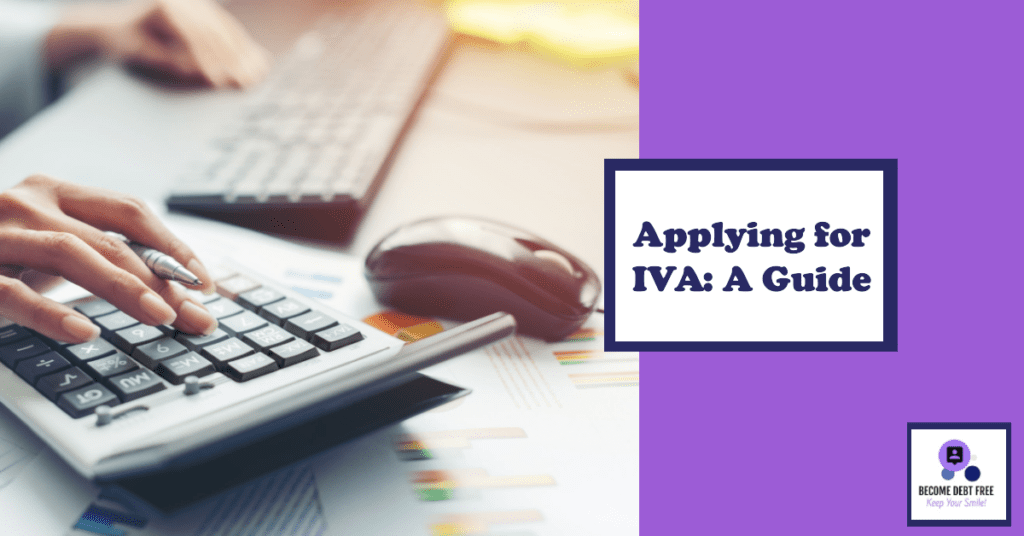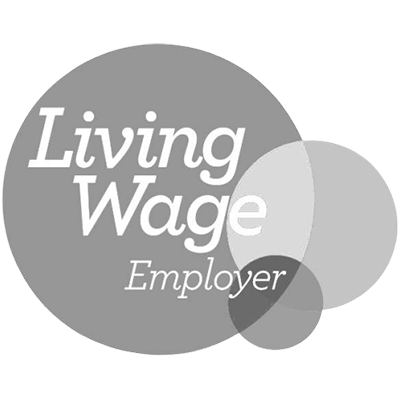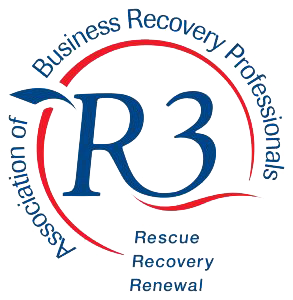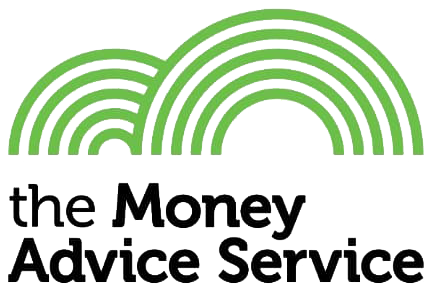Applying for IVA. An IVA is a formal, legal agreement between you and your creditors, designed to help manage and eventually clear your debts. Essentially, it’s a commitment to make regular monthly payments towards your outstanding debts over a set period, typically 5 to 6 years, with any remaining debt potentially written off at the end of this period.
The purpose of this article is to provide a clear, step-by-step guide to applying for IVA, from understanding if it’s the right solution for you, through to navigating the application process and beyond. Our aim is to give you the information and confidence you need to tackle your debt issues head-on and to guide you towards a more secure financial future.
Whether you’re at the very start of considering an IVA or you’re ready to take the first steps towards an application, we’re here to help. So let’s get started on your path to financial recovery.
Quick Links
- Understanding Individual Voluntary Arrangements (IVA)
- Is an IVA the Right Solution for You?
- Preparing to Apply for an IVA
- Finding a Licensed Insolvency Practitioner
- Creating Your IVA Proposal
- Creditors’ Meeting and IVA Approval
- Managing Your IVA
- What Happens at the End of the IVA?
- Frequently Asked Questions (FAQs)
- References
Understanding Individual Voluntary Arrangements (IVA)
An Individual Voluntary Arrangement, commonly known as an IVA, is a formal agreement made with your creditors to repay a percentage of your debts over a certain period, often over 5 to 6 years. It’s a legally binding process and is supervised by an licensed insolvency practitioner, who acts as the intermediary between you and your creditors.
Essentially, an IVA is a debt solution designed to help individuals who are struggling to repay their unsecured debts. These are debts not tied to an asset, like personal loans, credit card debts and council tax arrears. Once you enter an IVA, interest and charges on these unsecured debts are usually frozen, and creditors cannot initiate any legal action against you.
Under an IVA, you commit to making regular, affordable monthly payments, based on your disposable income – that’s the money left after living costs. After the agreed period (typically 5 to 6 years), any remaining unsecured debt is written off, offering you a clear path towards a debt-free life.
It’s important to bear in mind, however, that an IVA is not a one-size-fits-all solution. It’s suitability depends on your individual circumstances, including the amount of debt, your income, and your personal situation. It’s also crucial to understand that an IVA will have a significant impact on your credit rating for six years from the start date.
But don’t worry, we’re here to help you navigate through these complexities and provide a comprehensive guide to applying for an IVA. So, if you’re considering this path, continue reading to find out more about how it works, the application process, and whether it’s the right solution for your financial situation.
Is an IVA the Right Solution for You?
As mentioned before, whether an IVA is the right debt solution for you largely depends on your personal circumstances. It’s not about how much debt you have, but rather, whether you have a regular income that allows you to meet the monthly repayments stipulated by the IVA. Here are a few considerations to guide your decision:
- Your Debt Level: Usually, an IVA is suitable for those with unsecured debts of over £7,000. This is because the costs involved in setting up an IVA can outweigh the benefits for lower debt levels.
- Your Income: You should have a regular income that can cover the agreed monthly payments after your essential living costs have been accounted for. This is known as your disposable income.
- Your Assets: If you’re a homeowner with equity in your property, an IVA can prevent forced property sales, which might happen in bankruptcy. However, in some cases, you may need to release equity from your home as part of the agreement.
- Your Creditors: IVAs can cover most types of unsecured debts. If the majority of your creditors (by value) agree to the IVA proposal, all your unsecured creditors are bound by its terms – even those who voted against it or did not vote at all.
- Your Credit Rating: An IVA will appear on your credit file for six years from the start date, which could make getting further credit more difficult during this period.
Before deciding, it’s essential to compare an IVA with other debt solutions. For instance, bankruptcy might be a more suitable option if you have little disposable income or assets. Alternatively, a Debt Management Plan (DMP) might be better if you have lower debt levels and can repay your debts in full, albeit over a longer period.
To ensure you’re making an informed decision, it’s recommended to consult with a licensed insolvency practitioner. They are bound by the R3 Statements of Insolvency Practice (SIPs), which provide best practice guidance on how insolvency practitioners should handle different aspects of insolvency, including IVAs.
These SIPs aim to promote transparency, consistency and confidence in insolvency practice. This means your insolvency practitioner will consider your individual circumstances, provide you with advice tailored to your financial situation, and ensure your IVA proposal is realistic and fair to both you and your creditors.
It’s also important to seek free debt advice from a debt charity. They can offer impartial advice and help you understand how an IVA could affect your financial situation.
Remember, the decision to enter an IVA is not one to be taken lightly. It’s a legally binding agreement with significant implications, so you should take the time to consider your options and seek professional advice.
Preparing to Apply for an IVA
Before you apply for an IVA, it’s essential to gather all the information you’ll need and understand the process. This will help streamline your application and set the right expectations.
Understand Your Financial Situation
Your first step is to take a good look at your financial situation. This involves calculating your total unsecured debt, monthly income, living costs, and any assets you may have, such as your home or car. Don’t forget to include all forms of income, like salary, benefits, and contributions from family or friends.
Prepare a Budget
Once you have a clear idea of your income and debts, you’ll need to draft a detailed budget that covers your monthly living costs. This should include rent or mortgage payments, utilities, council tax, food, travel, and any other regular expenses. Your budget will help determine your disposable income, which is the amount you have left each month after all essential costs have been paid. This is the money you could potentially put towards your monthly IVA payments.
Identify Your Creditors
Make a comprehensive list of all your creditors, along with the amount you owe each one. This includes any credit card debts, personal loans, or store cards.
Seek Debt Advice
Before you decide on an IVA, it’s a good idea to get impartial debt advice from a debt charity or an licensed insolvency practitioner. At Become Debt Free, our team of licensed insolvency practitioners can help guide you through your options and see if an IVA is the right solution for you.
You can reach out to us at 0800 169 1536 or leave an enquiry on our website. We offer nationwide advice and solutions tailored to your personal circumstances.
After you have prepared all the necessary information and sought advice, you are ready to begin the IVA application process with your chosen insolvency practitioner. Remember, the more accurate and detailed your financial information, the smoother the IVA application process will be.
Finding a Licensed Insolvency Practitioner
When applying for an IVA, one of the crucial steps is finding a licensed insolvency practitioner (IP). This professional will play a pivotal role in setting up your IVA, so it’s important to find someone you can trust.
Role of an Insolvency Practitioner
An insolvency practitioner is a person authorised and regulated by a professional body to act in relation to an insolvent individual, partnership or company. Their primary role is to review your financial situation, draft an IVA proposal on your behalf, and communicate with your creditors. They also administer the IVA throughout its term, ensuring you meet your obligations and dealing with any changes in your circumstances.
Choosing an IVA Provider
Not all insolvency practitioners provide the same level of service, so it’s essential to do some research before selecting one. When choosing an IVA provider, consider their fees, customer service, and reputation. You should also check their credentials to ensure they are authorised to provide this service.
Checking the Insolvency Register
The insolvency register is a public record of insolvency cases, including IVAs. You can use this register to verify that your chosen IP is licensed and doesn’t have any adverse records. This is a crucial step to safeguard your interests.
Consider Become Debt Free
At Become Debt Free, we are licensed insolvency practitioners based in Leeds. We are committed to offering comprehensive advice and personalised solutions to individuals nationwide. Our team is ready to help guide you through the IVA application process and provide the support you need. Reach out to us at 0800 169 1536 or leave an enquiry on our website.
Choosing the right insolvency practitioner is a key step in applying for an IVA. Make sure to take the time to find a reputable professional who can guide you through the process and help improve your financial situation.
Creating Your IVA Proposal
Once you’ve partnered with a licensed insolvency practitioner, the next step is to create an IVA proposal. This document is critical to the IVA process, as it sets out how you propose to repay your debts. Here’s what you need to know:
Contents of an IVA Proposal
An IVA proposal details your personal and financial situation, your proposed repayments, and how these will be distributed among your creditors. It also includes the fees and costs associated with managing the IVA.
Determining Monthly Payments and Lump Sums
The amount you’ll pay each month is based on your disposable income, which is the amount left after you’ve paid your essential living costs such as rent, bills, and food. If you receive a lump sum during the IVA term – for example, from a redundancy payment, inheritance, or the sale of an asset – this could also be added to the pot to repay your creditors.
What Happens If Circumstances Change?
Life is unpredictable, and it’s possible your financial circumstances could change during the term of your IVA. If you’re unable to meet your monthly payments due to unforeseen circumstances like losing your job, it’s crucial to inform your insolvency practitioner as soon as possible. They can talk to your creditors about potentially adjusting your payments.
Remember, creating a realistic and sustainable IVA proposal is crucial. If your proposal isn’t affordable, you risk falling behind on your payments and your IVA failing. Working closely with your insolvency practitioner will ensure your proposal is tailored to your situation, offering a viable path to resolving your debts.
Creditors’ Meeting and IVA Approval
Once your IVA proposal is complete, the next step involves a critical meeting with your creditors. This step is key to securing their approval for your IVA.
The Creditors’ Meeting
The purpose of this meeting is to allow your creditors to vote on your IVA proposal. Your insolvency practitioner will convene the meeting, typically held over the phone, and represent your interests.
The Voting Process
Each of your creditors will be given a vote proportional to the amount you owe them. For your IVA proposal to be approved, creditors representing at least 75% of your total debt must vote in favour of the proposal. This does not have to be 75% of your creditors by number, but by the value of the debt they hold.
Role of Creditors in the Approval Process
Creditors may propose changes to your IVA proposal at this meeting, which you can choose to accept or reject. If the proposal is approved, all creditors will be bound by the terms of the IVA, even those who voted against it or who were not present at the meeting.
Remember, the goal of this meeting is to reach a voluntary arrangement that is agreeable to both you and your creditors. If the IVA is approved, you’ll start making payments as set out in your IVA proposal. If not, there are other debt solutions that your insolvency practitioner can help you explore.
Managing Your IVA
Once your Individual Voluntary Arrangement is in place, it’s important to maintain a good grasp on your IVA and understand your obligations to ensure successful completion.
Understanding Monthly Payments
Your IVA proposal will include details about your monthly payment amount. This is calculated based on your disposable income (income left after essential living costs). It’s crucial to make these payments in full and on time each month, as missing payments can lead to the failure of your IVA.
Dealing with Changes in Financial Circumstances
Life is unpredictable, and your financial situation can change during the term of your IVA. If your income decreases, or your living costs increase significantly, you must inform your insolvency practitioner promptly. They can then negotiate with your creditors and adjust your monthly payment if necessary.
Understanding the Terms of Your IVA
Typically, an IVA lasts for a fixed period, usually five to six years. During this time, you must adhere to the terms set out in your IVA proposal. This might include restrictions on taking out further credit and requirements to provide regular updates on your financial situation.
Potential Changes to the IVA
In some cases, you might be able to make changes to the terms of your IVA. For instance, if you receive a lump sum of money (like an inheritance), you might be able to offer this to your creditors in exchange for an early completion of your IVA.
Remember, an IVA is a legally binding agreement, and not adhering to the terms can lead to serious consequences. But with careful management and regular communication with your insolvency practitioner, you can navigate the process successfully and take control of your financial situation.
What Happens at the End of the IVA?
Successfully reaching the end of your Individual Voluntary Arrangement is a significant milestone and brings you one step closer to becoming debt-free. Here’s what to expect:
Completion Certificate
Upon the successful completion of your IVA, your insolvency practitioner will issue a completion certificate. This document serves as a formal declaration that you have fulfilled your obligations under the IVA, and the remaining unsecured debt has been written off.
Removal from Insolvency Register
Your details will be removed from the public insolvency register three months after the completion of the IVA. This will mark the end of your formal insolvency.
Debt Write-off
One of the key advantages of an IVA is the potential for a significant portion of your debt to be written off at the end of the arrangement. The exact amount written off will depend on your personal circumstances, but it can provide substantial relief from your debt burden.
Credit Rating Restoration
Although an IVA will have a negative impact on your credit rating initially, over time and with responsible financial behaviour, your credit rating will gradually improve. The IVA will be removed from your credit file six years from the start date, even if your IVA lasts longer.
Control of your Assets
Once the IVA is completed, all remaining interest and charges on your unsecured debts are frozen, and you regain complete control over your assets, including your property and vehicle.
Completing an IVA requires commitment and diligence, but the benefits can be life-changing. Remember, help is always at hand, and insolvency practitioners like ‘Become Debt Free’ are there to guide you every step of the way.
Frequently Asked Questions (FAQs)
Below, we answer some of the most commonly asked questions about Individual Voluntary Arrangements and the IVA application process.
What is an IVA?
An Individual Voluntary Arrangement (IVA) is a formal, legally-binding agreement between you and your creditors to pay back your debts over a set period of time.
Who is eligible for an IVA?
The eligibility criteria for an IVA are quite flexible. However, at Become Debt Free you need to have at least £7,000 of unsecured debt and two or more creditors. An authorised insolvency practitioner can assess your situation and help determine if an IVA is the right debt solution for you.
How long does an IVA last?
IVAs typically last for 5 to 6 years. The duration can be extended if required, especially if you’ve had payment breaks or reduced your monthly repayments due to a change in circumstances.
Will an IVA affect my credit rating?
Yes, an IVA will have a significant impact on your credit rating for six years from the date it starts. This can make it more difficult to borrow money during this period.
Can I apply for an IVA if I’m a homeowner?
Yes, homeowners can apply for an IVA. However, you may be asked to release some equity from your home as part of the IVA agreement. If this isn’t possible, your IVA may be extended by 12 months.
Can my IVA be cancelled by my creditors?
Creditors can request to cancel your IVA if you fail to meet your obligations, such as missing payments. If your IVA is cancelled, your creditors could pursue you for the full amount you owe, and you could be made bankrupt.
How can I start the IVA application process?
You can begin by seeking free debt advice from a licensed insolvency practitioner like Become Debt Free. We can help you understand your options and guide you through the application process.
References
The primary sources for this article are listed below.
Options for dealing with your debts: Individual Voluntary Arrangements – GOV.UK (www.gov.uk)
Find an insolvency practitioner – GOV.UK (www.gov.uk)
Details of our standards for producing accurate, unbiased content can be found in our editorial policy here.









